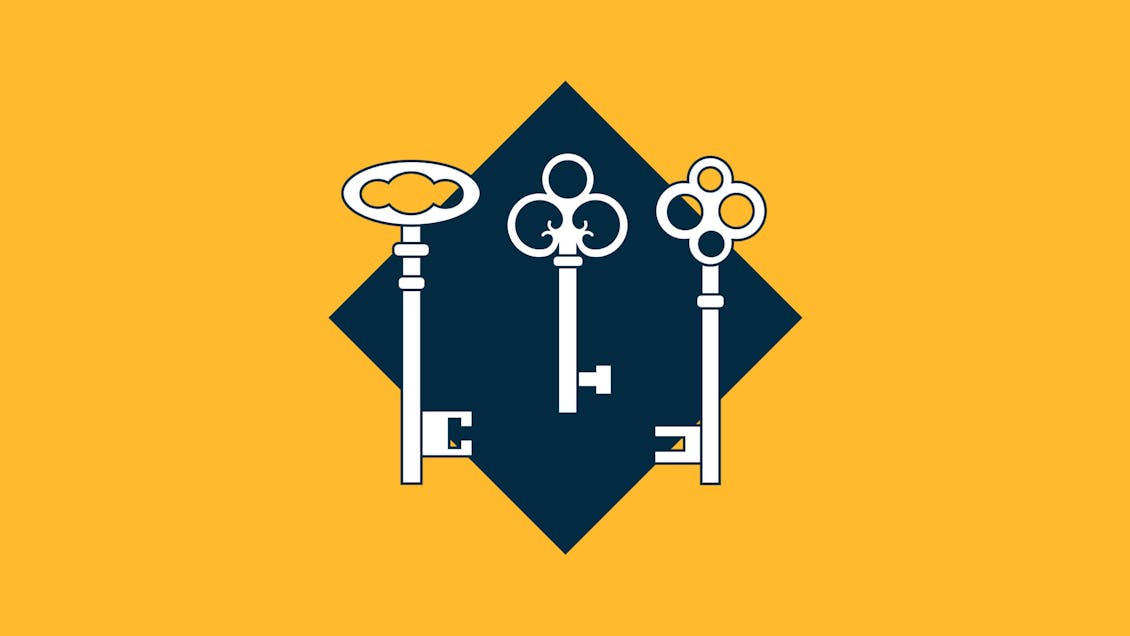3 Keys to Great Customer Experience for Enterprise Companies

The truth? Your customer experience isn’t about “brand awareness.” Or “onboarding.” Or “support.” When your customer needs something, they’re not thinking about funnel stages or your org structure. And ultimately, you shouldn’t either.
Don’t get me wrong — a good funnel diagram has its place. It’s an important principle that can help you organize your thinking and coordinate your efforts. But it can’t be the be-all-end-all for an organization that wants to be successful across the entire customer journey. (Try picturing a real person in a real funnel for a moment. It’s basically a terrifying, authoritarian dunk tank.)
Becoming truly customer-centric isn’t just a mentality. It’s a practice. Like with any practice, it can require some big changes up front, but will help your business flourish for years to come. Here’s how to start.
Try picturing a real person in a real funnel for a moment. It’s basically a terrifying, authoritarian dunk tank.
Know your customers as people.
Being customer-centric is ultimately about making your customers’ lives easier. To do that well, you really have to get to know them and their challenges — and then determine how you can help.
In the B2B space, your customer landscape is especially complex. You need to account for the individual buyer or user, but also their organizational context — things like internal gridlock, competing priorities, frequent turnover, quarterly or annual budgets, and even vacation schedules.
We think it’s best to start every initiative with research and validate ideas along the way. This should include quantitative and qualitative activities to help you understand who your customers are, how they behave, and why.
Lucky for you, this is actually an area in which your enterprise likely has a major advantage: existing customers. Perhaps you already have decades of research and analytics, or, at the very least, have easy access to real customers for insight.
Understand who your customers are, how they behave, and why.
Remember, don’t just crunch the numbers. Get to know these people on a human level. Only then can you approach customer experience in the way that you cook someone’s favorite dish or pick out the perfect gift — with true understanding and care.
Think needs, not departments.
The organizational parallel to the funnel is the department, with each department taking responsibility for a customer “stage.” From the business perspective, it makes sense; it’s easier to focus on one area and develop deep expertise. But at enterprise companies, departments often become silos. And silos quickly become myopia.
Brands that bring together strategists, content marketers, salespeople, product owners, UX designers, and customer care specialists will be better positioned than their competition to serve and delight customers. With solid research as a common foundation, these different areas of expertise can become an integrated choir — rather than a bunch of soloists singing over each other. One great example of this mentality is the emergence of cross-functional “Head of Growth” roles, most frequently seen at West Coast start-ups.
Admittedly, this shift can require tough examination, conversations, and decisions for your organization. A common scenario we see is that sales compensation structures can direct marketing and sales strategies that are contrary to user interests. Identifying such organizational roadblocks — and determining how to reorient — is often a requirement on the path to becoming truly customer-centric.
Be in the right place, every time.
Another limitation to the funnel is that it forces us into linear thinking. When you focus on customer needs rather than stages, you’ll likely discover multiple customer journeys — and that your efforts can do double (or even triple!) duty to support that variety.
For example, the content you create may be relevant at many points throughout a customer’s experience. Say you sell recruiting software with a robust analytics dashboard. Because you’re awesome, you’ve rolled out new features to help companies gain visibility on roles and gender. You’ve also written an article on how to build more diverse teams. Let’s see how this same article can work in different ways, providing value for two different user journeys.
Scenario #1: Making a Welcome Introduction
An HR manager wants to attract more women to their open engineering roles. They read your article and at the end, you let them know your product can provide data and analytics to help their organization track progress. The content solves their initial need and the product capability might invite them toward a sales conversation (or at least gets your name on their radar).
Scenario #2: Giving Relevant Advice
An existing customer runs a report and realizes they’re having an issue attracting women to engineering roles. You then provide the article. The product solves their initial need and the content provides additional value.
Truly knowing your customers and organizing around their needs can have huge payoffs. You’ll become more relevant, keep start-up competitors at bay, and realize new business outcomes. Larger organizations don’t have the luxury of a clean slate, and it often takes an initial investment of time and effort to shift your approach. But with existing customers on your side and some serious dedication, you can make it happen.


